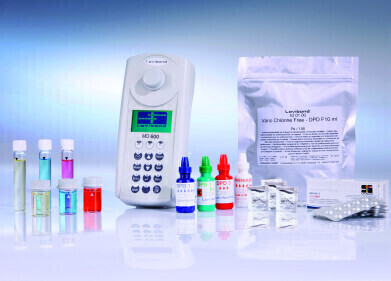Portable/Field Testing
New Condition Monitoring Sensor Suitable for Hazardous Environments
Jun 26 2014
SKF (UK) has launched the SKF Wireless Machine Condition Sensor, which uses the WirelessHart communication protocol and provides dynamic vibration and temperature data for condition monitoring and machinery diagnostic applications. The product has ATEX Zone 0 certification, which means that it can also be used in hazardous environments, for example those found in petrochemical, oil and gas, or pharmaceutical plants. The SKF Wireless Machine Condition Sensor combines both sensor and router node into one compact and battery-operated unit the size of a typical industrial accelerometer.
SKF Wireless Machine Condition Sensors communicate with each other, and with a wireless gateway, creating a mesh network. This type of network and communication protocol is ideal for monitoring rotating machinery throughout large plants, in hard to reach locations, or in areas where traditional WiFi communications will not work.
“The new SKF Wireless Machine Condition Sensor offers monitoring capabilities that may be impossible with wired systems or hand-held devices. This can ultimately lead to reduced condition monitoring costs as well as to a safer approach to machine monitoring,” says Jan Hendrik van der Linden, Product Line Manager, SKF.
With the new product, users can benefit from an improved maintenance program, reduced maintenance costs, reduced installation costs, enhanced employee and machine safety, and compatibility with the established SKF @ptitude Analyst software suite.
The SKF Wireless Machine Condition Sensor operates in a low power consumption mode, allowing the battery to last for years in the field. Communication capabilities include relaying data from one node to another, relaying data back to the gateway, and receiving automated commands from the Wireless Sensor Device Manager software that initiate the measurement and processing circuits to take data and transmit it back over the network. If a node is unable to receive signals directly from the WirelessHART gateway, it will instead send and receive its data through a nearby node that can pass the data to and from the gateway – ultimately creating the mesh network.
Once data is collected, the WirelessHART gateway communicates with the Wireless Sensor Device Manager software supplied by SKF. Device Manager then automatically exports the data into SKF @ptitude Analyst, a comprehensive diagnostic and analytic software package, where a plant engineer can analyse the data and determine a course of action.
Digital Edition
IET 34.2 March 2024
April 2024
Gas Detection - Biogas batch fermentation system for laboratory use with automatic gas analysis in real time Water/Wastewater - Upcycling sensors for sustainable nature management - Prist...
View all digital editions
Events
Apr 30 2024 Melbourne, Australia
Apr 30 2024 Birmingham, UK
May 03 2024 Seoul, South Korea
May 05 2024 Seville, Spain
May 06 2024 Minneapolis, MN, USA




-QED-Image.jpg)














